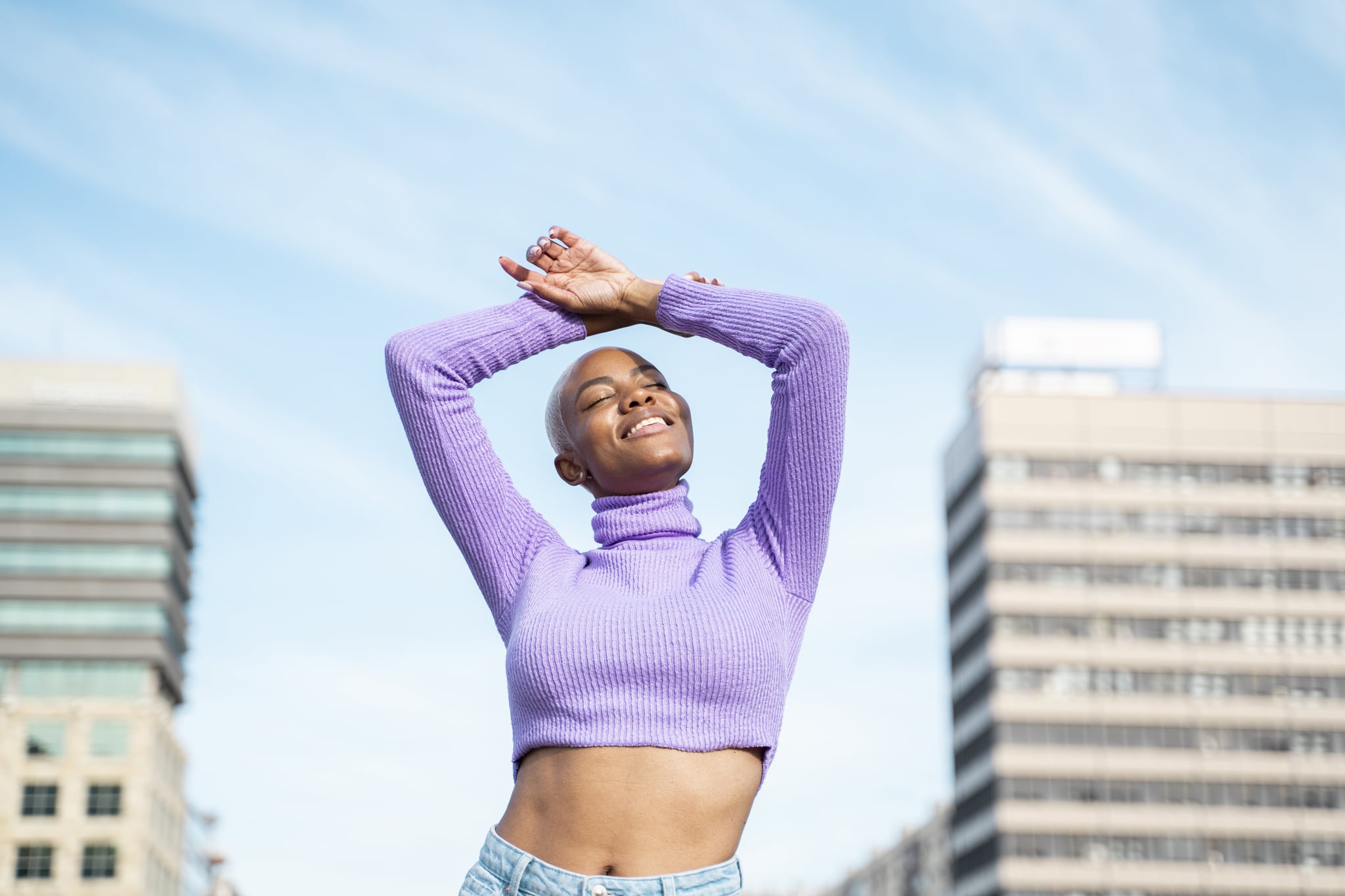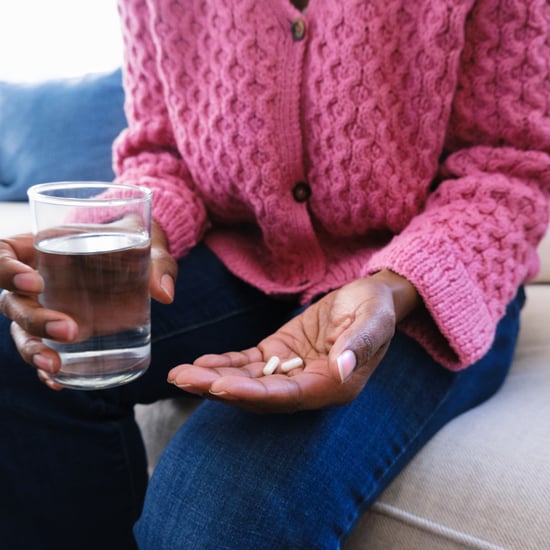Do Black People Need More Vitamin D?
Vitamin D Deficiencies Are Common in People With Darker Skin Tones — Here's Why

I've heard that Black people (and people with darker skin tones) are at greater risk for vitamin D deficiencies, and that it's imperative we spend time in the sun, especially during the winter months, to make sure our bodies are getting adequate amounts of vitamin D. After some preliminary research, I found that it was in fact true that Black people and people with darker complexions tend to be deficient in vitamin D, with one main reason being the amount of melanin pigment that makes up our rich complexions.
I also found that "a deficiency in vitamin D3 can result in obesity, diabetes, hypertension, depression, fibromyalgia, chronic fatigue syndrome, osteoporosis, and neuro-degenerative diseases," according to the International Journal of Health Sciences. This is important to me because conditions such as diabetes and hypertension are already prevalent among Black people and people of colour for reasons such as the lack of access to quality food sources and racism.
Curious as to whether or not Black people and people with darker skin should be concerned about a potential vitamin D deficiency and the purpose vitamin D plays in the body, I spoke to Nofisat Almaroof, MD, a board-certified family physician.
What Vitamin D Does For Your Body
One of the main reasons people need vitamin D is for skeletal health, Dr. Almaroof told POPSUGAR. Vitamin D also supports calcium absorption in the gut and prevents the involuntary contraction of muscles, which can lead to cramping and muscle spasms, according to the National Institutes of Health (NIH). There doesn't seem to be many extraskeletal benefits, according to Dr. Almaroof, but she said some believe it can help with immune function and cardiovascular health, explaining a lot of that has to do with how vitamin D plays a role in the absorption of calcium.
How Your Body Gets Vitamin D
"The main way that the body gets most of its vitamin D is from the synthesis via the skin," Dr. Almaroof said. Essentially, the skin absorbs ultraviolet rays from the sun, and then converts it into a "previtamin D" form that then causes different chemical reactions in the skin, producing a form of vitamin D the body can use, she explained.
Why Some Black People Have Vitamin D Deficiencies
There are a variety of reasons someone may be deficient in vitamin D, and for Black people and people with darker complexions, one main reason is the amount of melanin pigment in their skin, Dr. Almaroof explained. "Sunlight itself induces production of melanin and melanin also reduces production of vitamin D3 in the skin," she said. For people with darker skin tones, the chemical reaction that converts vitamin D into a form the body can use is reduced compared to those with less melanin such as white people.
People can also develop deficiencies in vitamin D when intakes are lower than the recommendation over time, exposure to sunlight is limited, the kidneys can't convert 25(OH)D to it's active form, or absorption of vitamin D from the digestive track is inadequate, according to the NIH. Additionally, people who have milk allergies, are lactose intolerant, or follow ovo-vegetarian (those who don't eat meat or dairy products) or vegan diets tend to have lower levels of vitamin D.
Signs and Symptoms of Vitamin D Deficiency
When something is off in your body, it may manifest in the form of physical symptoms to alert you that something is wrong. With vitamin D deficiencies, people more than likely won't show any physical symptoms unless their vitamin D levels are less than 12 Ng/mL, Dr. Almaroof said. And even then, it would manifest in bone pain, a stress fracture, or other skeletal injuries that didn't involve acute trauma, according to Dr. Almaroof. She also said those who are feeling fatigued or emotionally down may have a vitamin D deficiency, but it's rare.
The Best Ways to Get Adequate Amounts of Vitamin D
One way to make sure you're getting enough vitamin D is by spending time in the sun, although the season, time of day, length of day, cloud cover, smog, skin melanin content, and sunscreen affect UV radiation exposure and vitamin D synthesis, according to the NIH. These factors make it difficult to provide universal guidelines on how much sun exposure one needs for sufficient vitamin D synthesis, the NIH states, but some researchers agree that five to 30 minutes of exposure between the hours of 10 a.m. and 4 p.m. daily or at least twice a week, specifically targeting the face, hands, and legs without sunscreen, tends to lead to sufficient vitamin D synthesis.
It's also possible to get vitamin D via supplementation and through food sources, although few foods naturally contain vitamin D. "The flesh of fatty fish (such as trout, salmon, tuna, and mackerel) and fish liver oils are among the best sources," according to the NIH. The recommended dietary allowances vary depending on your sex and age, with the NIH recommending 600 international units or 15 micrograms of vitamin D per day for males and females (this language comes directly from the NIH).
There are no recommendations for population vitamin D screenings, although screenings for vitamin D status are becoming a common part of routine blood work, the NIH reports. If you have concerns about whether or not your vitamin D levels are low, it's advised you bring them up with your primary care provider.







